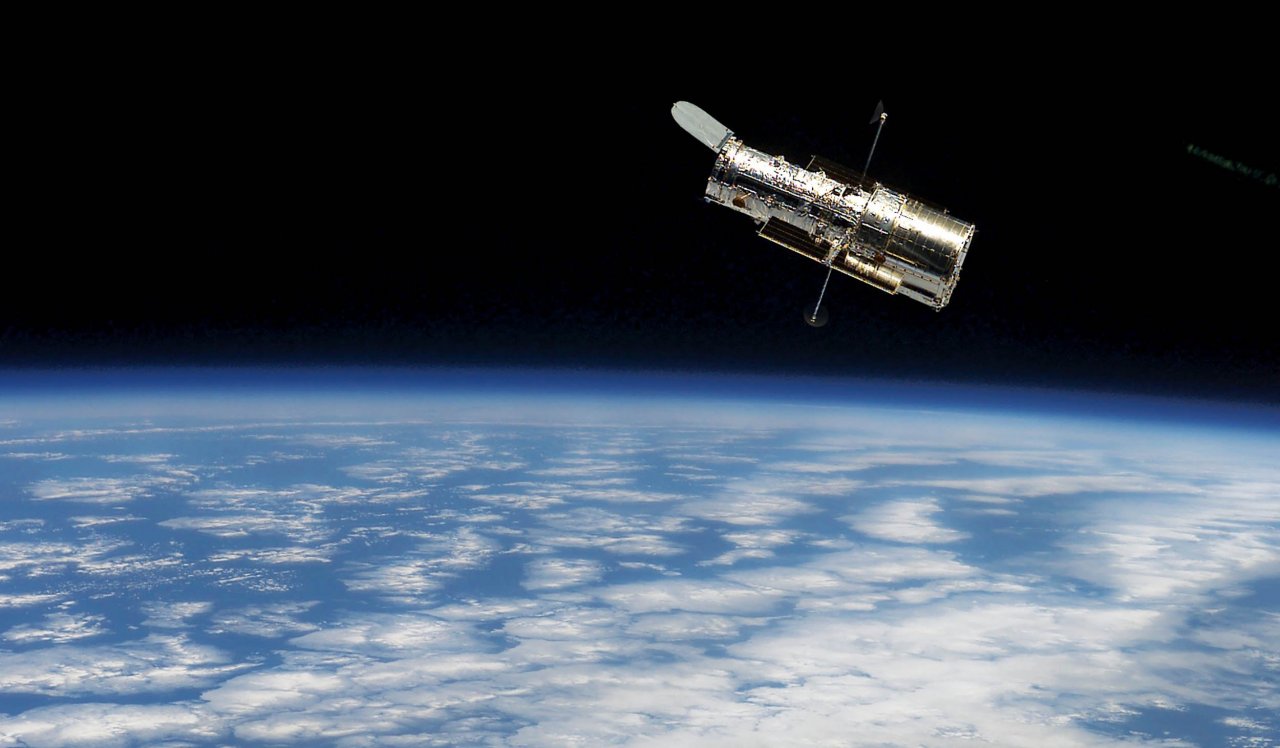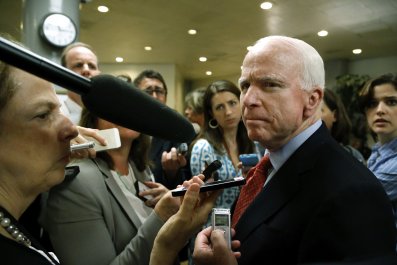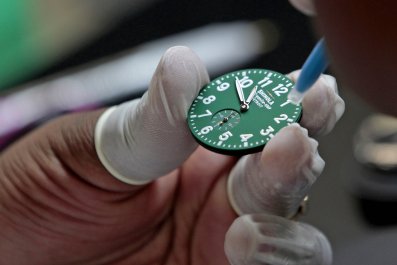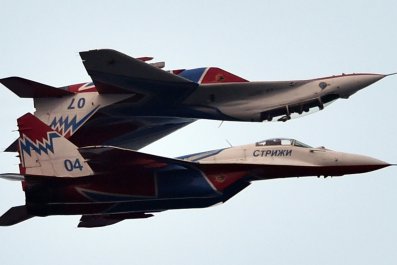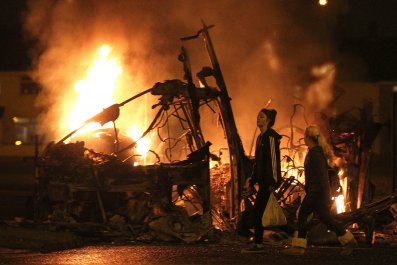It's a case of diplomatic fact being far, far stranger than science fiction. Earlier this month in Hollywood, while the Lucasfilm team announced the title of the latest movie in the lucrative and hugely popular Star Wars franchise, United Nations diplomats in New York bickered over whether weapons should be banned in outer space.
True, the vote at the U.N. General Assembly's First Committee, which deals with disarmament, did not produce nearly as much buzz as The Force Awakens, the prospect of which thrilled every nerdy Star Wars enthusiast. But, as one diplomat observed, there's no surer sign that the glamorous lethal weapons dreamed up by science fiction moviemakers are about to become reality than the urgent attempts by diplomats to outlaw them.
America, long at the forefront of space research, may now be falling behind in the space race. With dwindling funds set aside for NASA, much of the technical work being done toward the next episode in America's exploration and mastery of space has been moved from federal government bodies to private enterprise.
That switch in funding has also resulted in a slowdown in America's traditional advantage in space. As recent disasters, such as the deadly crash of Richard Branson's Virgin Galactic test flight and the explosion on the launch pad in Virginia of the Cygnus cargo ship taking supplies to the International Space Station, have shown, private space companies in the U.S. have yet to show they are up to the task.
Despite the setbacks, however, the arms race in outer space is getting more competitive. Weapons like Magneto Hydrodynamic Explosive Munition (with the delicious acronym MAHEM), Tactical High Energy Laser and other futuristic-sounding developments in America's arms industries are in progress and are competing against far simpler efforts to take terrestrial conflicts to the edge of the Earth's atmosphere, like Russia's "satellite cannon." Though the cannon failed to get off the ground, the Russians continue to secretly experiment with arms in space.
Such expensive, sophisticated and ingenious lethal weapons can quickly endanger everything that is out there in space, whether intended or unintended. One example: the task of sweeping up the detritus of space missions thus far. The fact that "space debris has accumulated over the past six decades from space explorations" calls for an "adequate response," Wu Haitao, a Chinese delegate to a space disarmament conference in Geneva, declared in March.
A fair point. But as is often the case in diplomacy, the accuser is also the violator. Back in January 2007, China became the first country to test an offensive satellite-killing device, firing an anti-satellite missile (ASAT) from Earth at one of its redundant weather satellites orbiting the planet. Tens of thousands of floating metal shards resulting from the explosion now threaten to collide with everyone's satellites and spacecraft. Traveling at high velocity, such debris, no matter how small, can destroy or fatally damage all the expensive and indispensable equipment it collides with.
Despite being roundly condemned by all sides, Beijing continues to experiment with ASATs, conducting its latest test last summer. "It's very problematic to see China working to weaponize space," Admiral Cecil D. Haney, the U.S. Strategic Command chief, said at the time.
Yet China is among those nations advocating for a treaty that would limit the use of arms in outer space. The Chinese and Russians pushed earlier this month to advance a U.N. resolution they hope will eventually become a binding global treaty determining what is and what is not allowed in space.
"Any modern technology development, including that in outer space, has its underside. The more sophisticated [advances in space] become, the more difficult it turns out to be to control their end use," said Vladimir Yermakov, Moscow's delegate to the Geneva gathering.
Cleaning up space trash is a laudable goal. But the true reason for proposing such a reasonable and responsible approach to the limitation of weapons of space goes way back to the Cold War. Russia has worried for the longest time that it will fall behind its arch-nemesis, the U.S., in the development of expensive, advanced space weapons, leaving it vulnerable to attack.
In 1986, a disarmament summit in Reykjavik, Iceland, between the Soviet leader, Mikhail Gorbachev, and President Ronald Reagan collapsed at the last minute when Gorbachev insisted upon the scrapping of all intercontinental ballistic missiles (ICBMs) fired through space, while Reagan had no intention of abandoning his pet space project: the Strategic Defense Initiative, commonly known as Star Wars, designed to provide an invisible shelter against missile attack over the entire U.S.
The idea of a defensive shield against missiles was no more than a fantasy at the time. Yet many analysts credited Reagan's Star Wars initiative with hastening the fall of the Soviet Union. According to that analysis, Gorbachev concluded that competing with the U.S. in the development of a new round of defensive weapons in space would empty the Soviet Union's fast-dwindling coffers. Unable to compete in space without going bust, the USSR collapsed.
The recent success of Iron Dome—the joint American-Israeli project that intercepted thousands of incoming short- and mid-range missiles lobbed at Israel's cities from Gaza during the war this summer—has reawakened global enthusiasm for defensive arms in space, including defense against ICBMs.
While ICBMs are mostly deployed on Earth, much of the support and guidance system for them is in outer space, where, arms-control experts believe, an errant missile fired by one country against another—think Dr. Strangelove— could set off first-response defense systems, which in turn would inadvertently launch an all-out unintended nuclear war.
Whether genuinely out of such concerns, or due to fears that it could once again fall far behind the U.S. in another round of the expensive arms race in space, Russia is redoubling its effort to encourage an international consensus to bring about treaties that would limit weaponization of outer space.
But other forces also have influence in the international arena. The final tally in a recent vote at the U.N.'s First Committee reflected some basic geopolitical realities and highlighted the current state of mistrust between Russia and America.
The nonbinding resolution, proposed by Russia and China, passed with 126 votes, though 46 countries, including most Europeans and America's allies in Oceania and Asia, abstained. Significantly, four countries—Georgia and Ukraine, who fear the expansionist aims of their Russian neighbor, along with the U.S. and its closest U.N. ally, Israel—voted against the resolution.
"Support grows for Russia's U.N. initiative for no-first placement of weapons in space," read a headline on the website of Itar-Tass, the Russian news agency, whose tone and accuracy harks back to the bad old days of Soviet propaganda. But Russia is whistling in the dark. America's objection to the Sino-Soviet proposal, at the time of a deepening rift between Moscow and Washington that threatens to doom almost every attempt to reach agreement in the international arena, promises that no comprehensive deal on arms in space will be signed anytime soon.
America "is willing to consider space arms-control proposals and concepts that are equitable, effectively verifiable and enhance the security of all nations," said Christopher Buck, the U.S. representative in the recent First Committee debate. But the current Sino-Russian proposal, he said, "does not satisfy these criteria."
Haitao, the Chinese delegate to this year's Geneva disarmament conference, hinted at one danger that was left unaddressed in the proposal. "Relevant countries," he said, likely referring to the U.S., "should give up their practice of unilateral sanctions on space technology transfer and interfering in space cooperation among other countries." He was referring to American attempts to prevent China from selling space technology to countries the U.S. considers rogue.
Meanwhile, in the recent U.S. midterms Republicans gained control of the Senate, which is charged by the Constitution with ratifying international treaties. Even if he wanted to, Obama will find it difficult to sign off on any binding pact on the subject.
When it comes to defense, many Republicans are wary of international pacts that would curb America's global military leadership. "I've always been against an arms-in-space treaty," said John Bolton, the United States's former U.N. ambassador, who is influential in GOP foreign policy circles. "The idea has never been more than a charade, a political gesture to constrain the United States while Russia and China proceed without inhibition to violate it."
So will science fact match science fiction? One of the ironies is that arms treaties rarely stop arms races. So, just at the moment George Lucas is setting out to continue the Star Wars saga with ever more spectacular spaceships armed with increasingly fantastical weaponry, in real life work continues behind the scenes that could eventually turn those movie special effects into a lethal reality.



